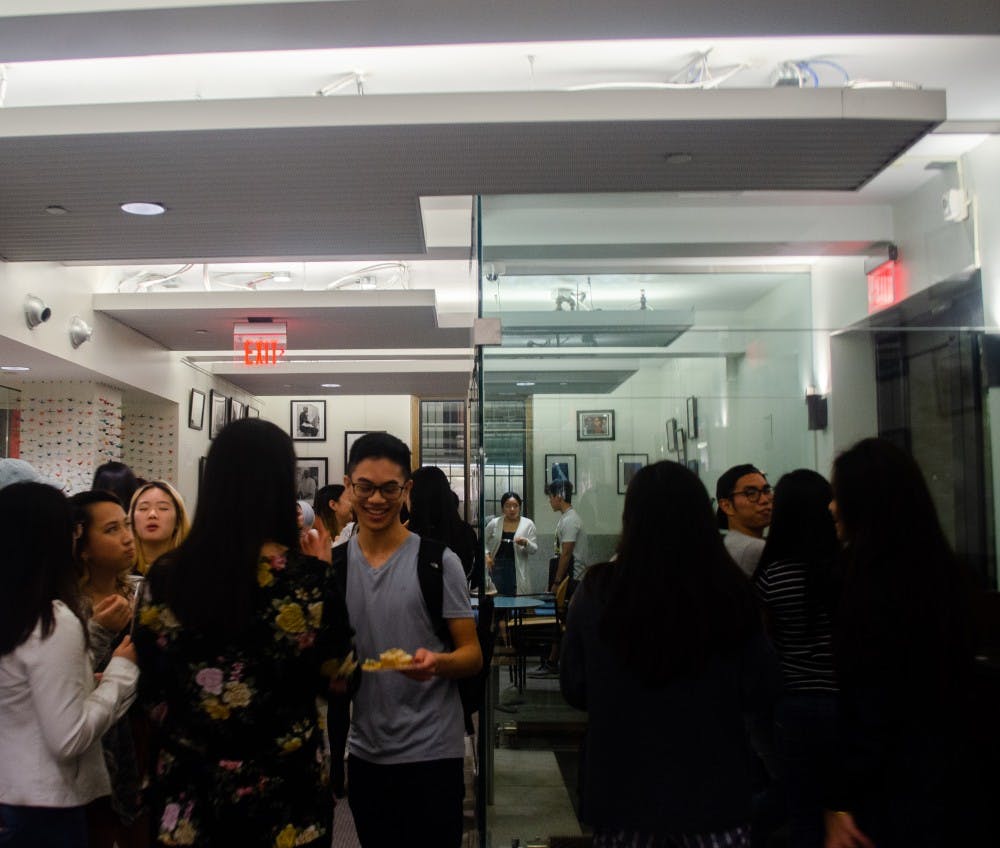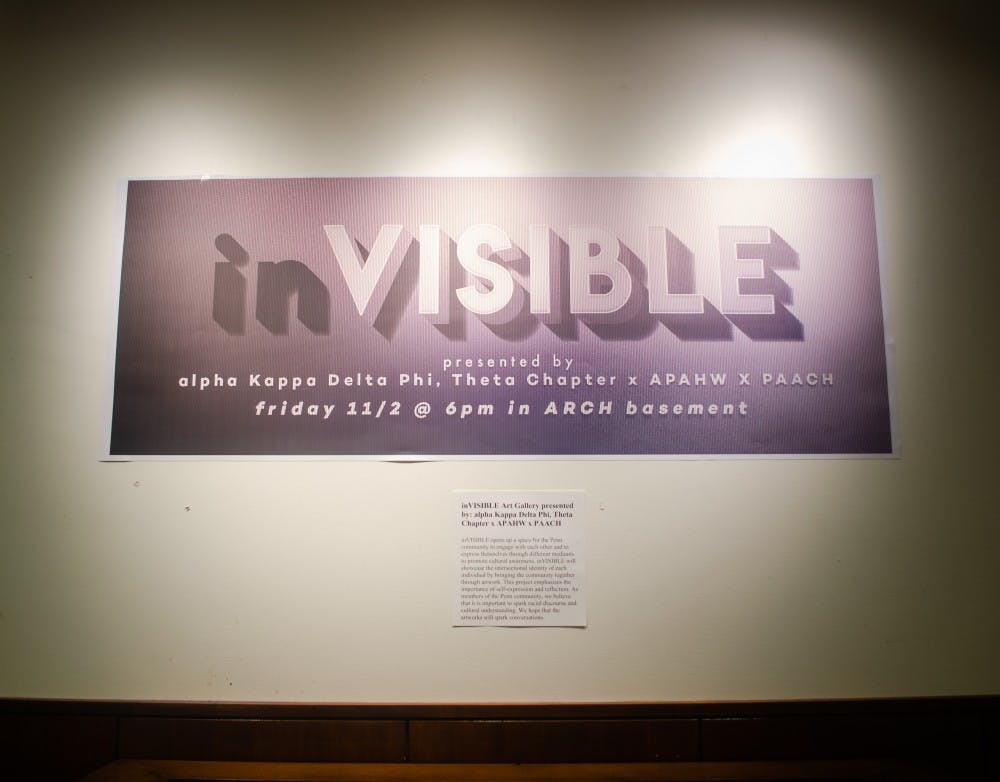Down the stairs from Frontera is the home of five cultural houses. But last Friday, what was once simply a space for cultural and community gathering transformed into an art gallery for expression of this cultural and community. Titled inVISIBLE, the gallery was a student–curated, student–crafted space aimed at promoting cultural awareness and the intersectional identity of each through art.
On the walls are photographs, drawings, paintings, and even scribbles in crayon. There doesn’t seem to be any particular commonality threading all the pieces together, but it’s hearing the stories behind each piece of art that I learn of what’s shared: identity. To be more specific, breaking down the stereotypes of what it means to be of a certain identity. With each story, I hear my own struggle with who I am reflected and articulated infinitely better than I could ever have myself. There’s a pride in so many of the artists of their own identities, whether that stem from race or gender, that evokes in me a longing for that same pride. It’s what this gallery aimed to do and is doing: it’s creating a space for representation and normalcy for that representation.
It’s pieces like Queenie Lam's (C ‘19) that hold this power. Her piece, titled My Chinatown is a depiction of the Chinatown in Philly. Having grown up just 15 minutes away from Penn, she’s seen more of Chinatown than what most imagine. It’s not just Ken’s Seafood or the occasional trip for bubble tea. It’s the workers pushing up the meat shops and the old ladies carrying groceries up and down the streets. But to some, the people and the often overlooked details—that’s “what makes it Chinatown for me,” she says.

Her second piece is in colored pencil. From afar, it looks like something I had once made when I was five. But that was the point: the piece is of a child going through art therapy. For Queenie, it’s going back to her childhood days, when her dad used to gamble a lot, having had to cope with the trauma and difficulties of being an immigrant. With language, cultural, and institutional barriers, the psychological effects of immigrants are by no means innocuous. He coped by gambling, and that in turn no doubt influenced her family dynamics. While the piece is a very personalized story, it brings me back to my own parents and their shared challenges. It’s a reminder that my experiences are part of a much larger phenomenon across Asian Americans; I wasn’t alone in this.
On the other end of the gallery is the work of Morgan Thweatt (C ‘20). It’s three large photographs in black–and–white, each of an African American employee at Penn, such as Ms. Marlene at New College working in retail and Lynette at Stouffer Commons. “As a black student at Penn, it’s weird that most adults that are black are in janitorial services and food services,” she says. “It’s just a weird vibe and it doesn’t sit right with me, especially when people say that the janitor didn’t do a good job or that the food is bad. They’re not rude… They have names and they’re not just the janitor lady.” The photos are a magnified look at the people so often undervalued on campus, bringing to light what most miss. In that way, these photos fulfill the other set of goals for the gallery in promoting cultural awareness, even in the simplest of ways on campus.

The idea for the gallery first bore fruit for Lisa Wu (N ‘20), the head of the event. “I was born and raised in Puerto Rico and I moved to Philly in eighth grade,” she recounts. “My first language was Spanish and when I lived there, I never really met any Asians. A lot of people just assumed I was another Asian American from California. This, for me, is a different medium to express myself. It’s more like community–building and very reflective of me and who I am.”
Each story told is a personal story, but at the same time, in that it’s brought together in a single space, is a common one. In telling these shared experiences, inVISIBLE makes what’s invisible, visible.

